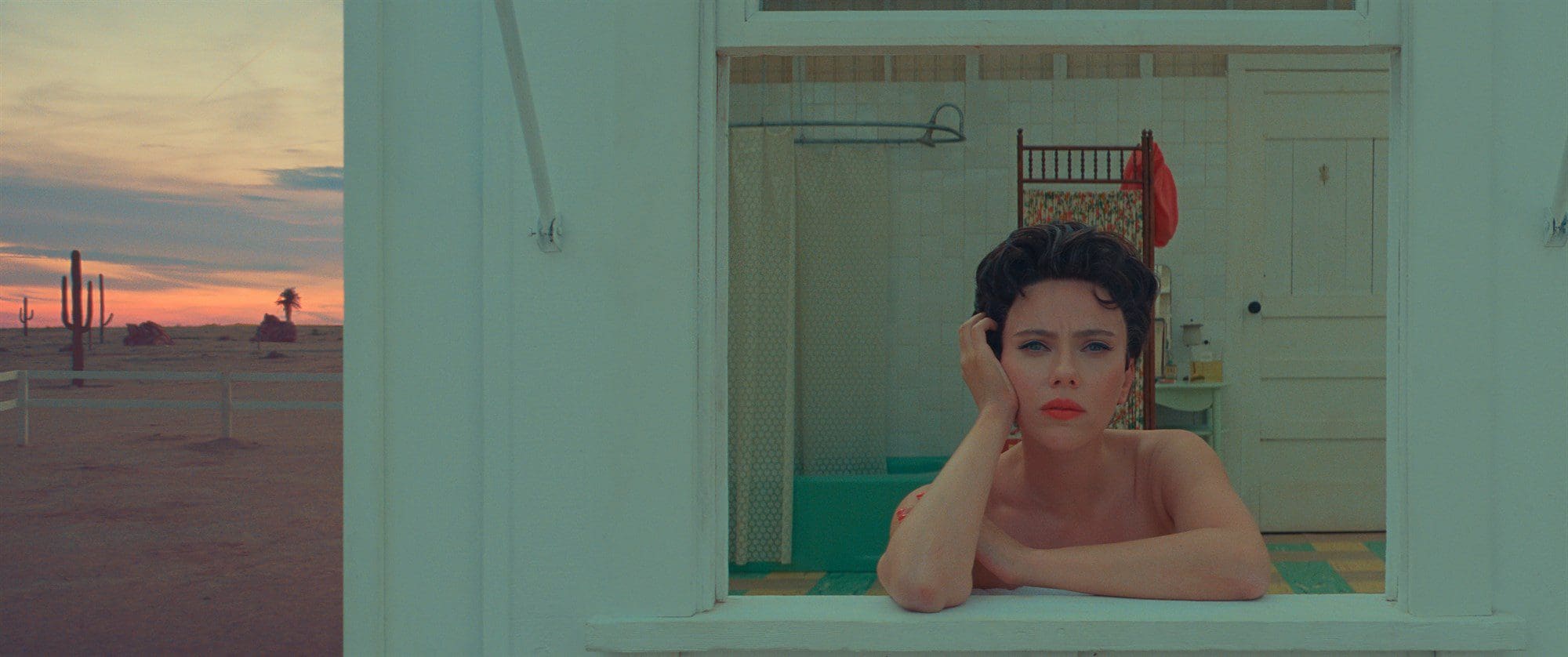
There’s a reason parodying Wes Anderson’s aesthetic has become a TikTok trend. With its bright colors, quirky music, deadpan humor, star-studded casts and the occasional stop-motion animated animal, his signature style dominates his films—sometimes to their detriment. Though Anderson pays meticulous attention to visual details, he’s not always so diligent with his scripts. Indeed, the substance can sometimes struggle to match the style. Not so with his latest, Asteroid City.
The film is narratively pretty simple: in the mid-’50s, the government quarantines a group of travelers in a roadside motel for a week after they witness an alien landing. We occasionally delve into a character’s past to understand their motivations, but mostly, we watch the characters interact in the present, constantly jumping from one plot thread to the next, only to pick up the thread again later. And while that could leave Asteroid City feeling slight or jumbled, Anderson gets away with it because that wandering focus only emphasizes the artifice. Because here, the style is the substance.
Anderson makes that clear from the opening scene. In black and white, on a dark stage, Bryan Cranston’s “Host” explains that what we are about to see is really a play. So, rather than the obvious sets and straightforward staging being purely a stylistic choice, they’re narratively justified. If a rock formation looks fake, that’s because it’s a piece of set design. If that road runner looks animated, that’s because it is. Still, while the the play set up could function simply as a framing device that’s never brought up again, Anderson constantly reminds the audience that what we’re watching is something constructed.
The first time Cranston’s character returns, the interruption is abrupt, almost annoying. In the middle of a scene featuring Jason Schwartzman’s Augie Steenbeck, a war photographer struggling with his wife’s very recent death, Cranston suddenly cuts in to tell us about the “actor” playing him, Jones Hall. As Cranston relays the apparently infamous story of how Hall stormed into playwright Conrad Earp’s (Edward Norton) home and so embodied the role that his name became synonymous with it, the “stage” rearranges itself into a facsimile of Earp’s home, with Schwartzman as Hall strutting around making a mess and getting into character by applying a fake mustache. That first time, the interlude can feel somewhat unnecessary, an indulgent affectation that breaks up the narrative flow. However, the more Anderson chops up his film, constantly reminding the viewer that we’re watching a piece of art constructed by a game group of artists, the more fun his formalist risks become.
Though passages where Scarlett Johansson as stage actress Mercedes Ford as glamorous film actress Midge Campbell rehearses scenes for an upcoming film are an obvious way in which Anderson emphasizes the craft, the stunt casting of recognizable stars in even minor roles serves the same function. Perhaps the best example is Margot Robbie as Augie’s deceased wife. We see her first as a still image and for much of the film’s runtime, it seems like that’s the only way we will see her. But this is Margot Robbie we’re talking about, movie star and the once and future Barbie, surely she’ll have a more significant role. Anderson makes good on that promise in one of the film’s best scenes, when Augie’s wife is given a resurrection of sorts. And while the exchange could come off as shallow stunt casting (see Robbie’s cameo in The Big Short), it’s a perfect example of the way Anderson weaponizes these actors’ star power and skill.
Where The French Dispatch‘s structure exhausted some viewers, Asteroid City‘s light touch allows Anderson and his actors to tell many stories at once, exploiting classical Hollywood tropes and structures to deliver them efficiently and poignantly. We understand the history between Augie and Tom Hanks’s father-in-law character simply from the looks on their faces as they talk on the phone. We know that Maya Hawke’s overwhelmed school teacher character will fall in love with Rupert Friend’s cowboy musician by the way her voice softens and her foot pops when they first meet. While Anderson’s style is fussier than ever in Asteroid City, the film’s structural, visual and performative complexity allows him to strip down his storytelling to its bare essentials. It’s his most playful and rewarding film in years.

